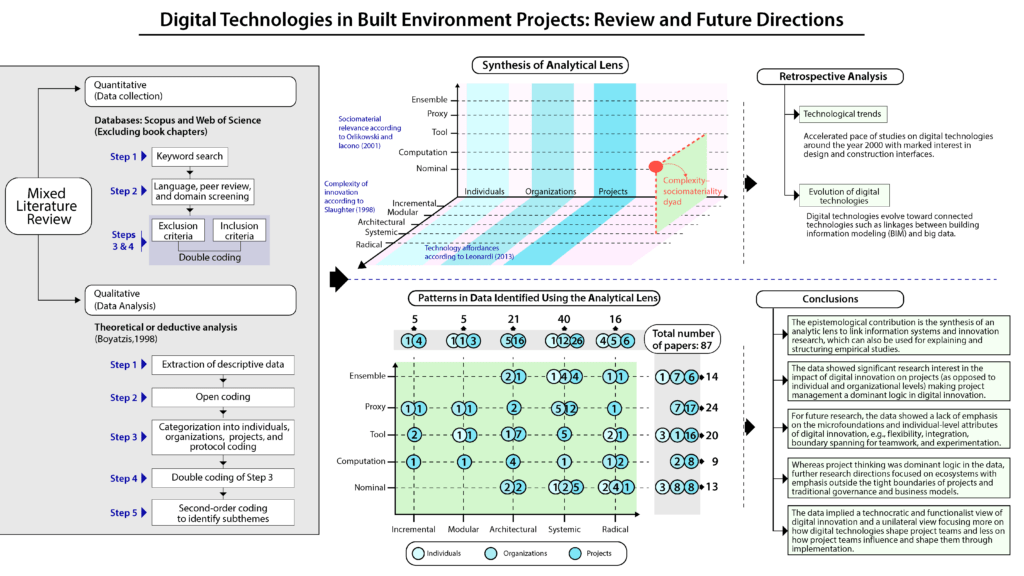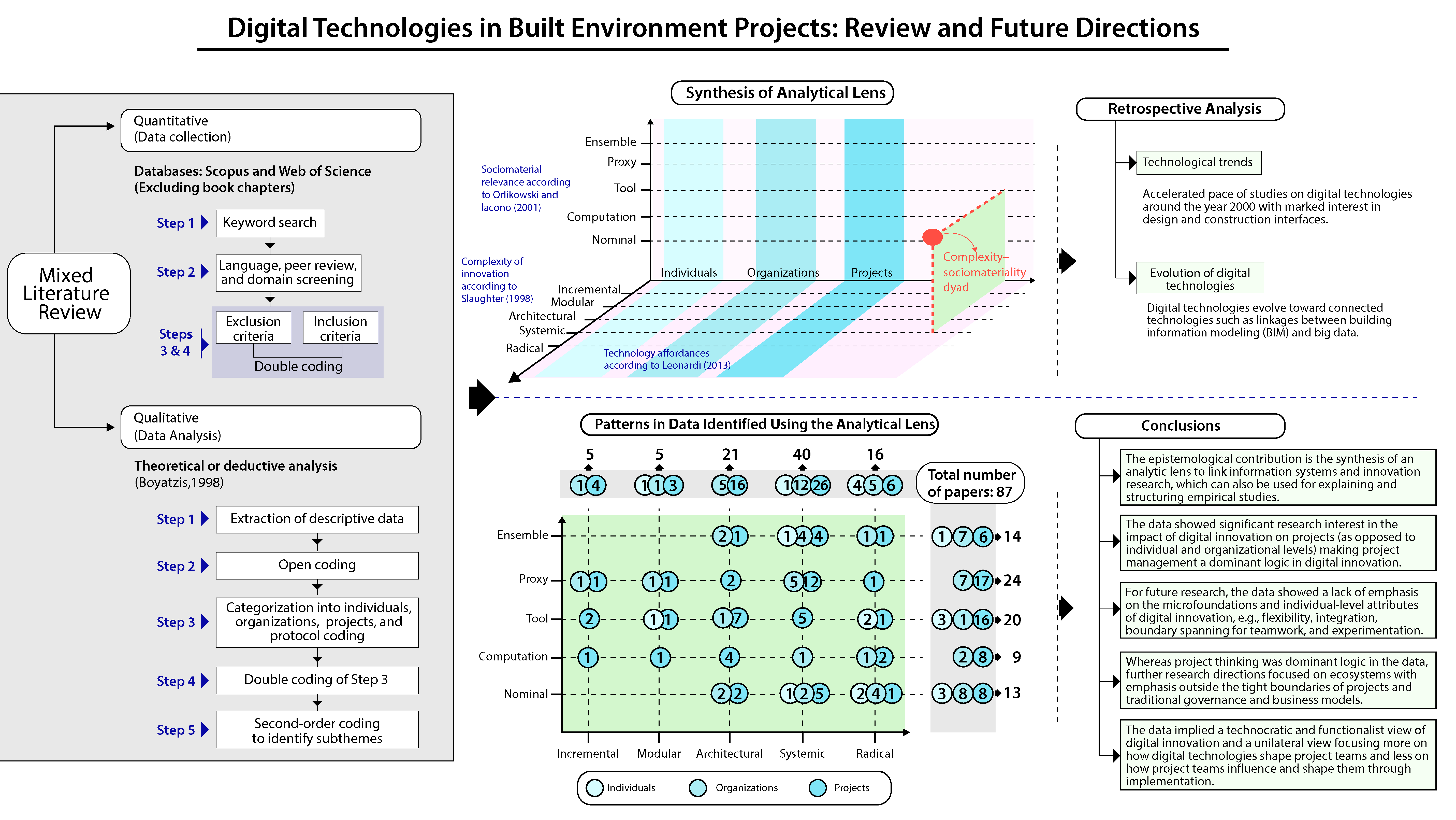An Unabridged View of Digital in the Built Environment
In this post, Eleni Papadonikolaki, associate professor in digital innovation and management at University College London’s Bartlett School of Sustainable Construction; Ilias Krystallis, a lecturer at the Bartlett School; and Bethan Morgan, director and co-founder (with Papadonikolaki) at Digital Outlook, introduce and reflect on their paper “Digital Technologies in Built Environment Projects: Review and Future Directions,” published in the Project Management Journal. The paper’s abstract — in both written and graphic format — appears below, followed by the authors’ reflections.
Through a systematic literature review we explore how digital technologies reshape and catalyze digital innovations in the built environment—a highly project-based setting. We analyzed circa 3,000 titles, further narrowed down to 87 articles. We synthesized an original framework for data analysis. The article presents implications for the deployment of digital technologies on three levels: individuals, organizations, and projects. Whereas most of these studies examined the impact of digital innovation in projects, recommendations focused on organizations, suggesting future directions for performance measurement, developing capabilities of firms to manage changes in dynamic environments and interorganizational settings.

What motivated you to pursue this research?
As well as the importance of healthcare, the recent ongoing Covid-19 pandemic has shown us the importance of the digital technologies to remain connected, at work and leisure and the centrality of physical space. To this end, the built environment is an important sector globally. However, it is notoriously one of two sectors with low digitization, after agriculture, according to McKinsey (2016). Our research idea behind this article started before this time as we were trying to understand how digital technologies evolve, especially in the built environment.
Were there any specific external events—political, social, or economic—that influenced your decision to pursue this research?
In the United Kingdom, the use of digital technologies, such as Building Information Modelling (BIM) has been recently mandated in publicly-regulated built environment projects, making digitalization and digitally-enabled project delivery an important business strategy. As the built environment is a project-based sector with slow technology adoption, poor knowledge management practices and thin profit margins, we were motivated to understand more about digital innovations around (i) individuals, (ii) organizations, and (iii) projects, that are the main organizational vessels.

What has been the most challenging aspect of conducting your research? Were there any surprising findings?
To capture and organize all the relevant knowledge on the topic, we pursued a systematic literature review. A key challenge of our work was linking the fields of Information Systems and Project Management and contextualize them around the built environment. To address this challenge, we synthesized an original framework for data analysis that helped us analyze circa 3,000 titles, further narrowing this sample down to 87 articles that we fully read in further thematic analysis. This innovative approach delivered an original analysis matrix consisting of three lenses that helped us and future researchers conducting fieldwork on digitalization in the built environment to:
- Identify the unit of analysis as to (i) individuals, (ii) organizations, and (iii) projects (Leonardi, 2013);
- Describe the complexity between organizations and projects and
- Evaluate the sociomateriality of digital artifacts in the reviewed literature.
Across our sample of 70 years, our study showed an accelerated pace of studies on digital technologies around the year 2000 with a marked interest in digitalizing the design and construction interfaces. At the same time, digital technologies are evolving toward connected technologies such as linkages between BIM and big data. The most surprising finding of the work was that whereas most of the studies in our sample examined the impact of digital innovation in projects, their recommendations focused on organizations, suggesting future directions for performance measurement, developing dynamic capabilities, and navigating complex inter-organizational settings.
In what ways is your research innovative, and how do you think it will impact the field?
Our study was the first – to the best of our knowledge – systematic literature review of digital technologies in the built environment. It will impact the field by calling for a reconceptualization of digital technologies as socio-material ensembles to address societal challenges, such as cleaner construction, social infrastructure, and sustainable development.































































































